
Today we introduce a new category for OpenSTEM® Blog articles: “This Week in Australian History”. So many important dates in Australian history seem to become forgotten over time that there seems to be a need to highlight some of these from time to time. For teachers of students from Foundation/Prep/Kindy to Year 6 looking for material to engage students around Australian history we recommend the OpenSTEM® Understanding Our World® HASS + Science program, which is filled with curriculum-aligned topics specifically designed to capture the interest of students. Whether you use our program or not, one can still connect with students by finding content applicable to their current lives which aligns with curriculum requirements. Here are some suggestions for this week:
 6th June: This year Wednesday 6 June was marked by the opening match of the annual State of Origin rugby league series between the NSW Blues and the Qld Maroons. Whilst rugby league has its own fascinating history, closely allied to Australia’s colonial history, and the first match between Qld and NSW was played on 11 July, 1908, the date of 6th June has another significant historical association for both states. It was on 6th June, 1859, that Queensland became a colony of Britain, separate from New South Wales. Officially referred to as “Queensland Day”, this date was celebrated with parades and festivals all over the state at its centenary in 1959. I’m sure many Queenslanders would like there to be more widespread recognition of their state’s “birthday”. Students in Years 5 and 6, in particular, with their focus on colonial and Federation history, might enjoy looking into the birthday of their own state, and the OpenSTEM resources on the history of each state can be used to good effect, see here for links: New South Wales, Victoria, Western Australia, South Australia and Tasmania.
6th June: This year Wednesday 6 June was marked by the opening match of the annual State of Origin rugby league series between the NSW Blues and the Qld Maroons. Whilst rugby league has its own fascinating history, closely allied to Australia’s colonial history, and the first match between Qld and NSW was played on 11 July, 1908, the date of 6th June has another significant historical association for both states. It was on 6th June, 1859, that Queensland became a colony of Britain, separate from New South Wales. Officially referred to as “Queensland Day”, this date was celebrated with parades and festivals all over the state at its centenary in 1959. I’m sure many Queenslanders would like there to be more widespread recognition of their state’s “birthday”. Students in Years 5 and 6, in particular, with their focus on colonial and Federation history, might enjoy looking into the birthday of their own state, and the OpenSTEM resources on the history of each state can be used to good effect, see here for links: New South Wales, Victoria, Western Australia, South Australia and Tasmania.
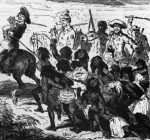 10th June: A more tragic event in Australian history is the Myall Creek Massacre, which took place on 10 June 1838 in central New South Wales. About 30 unarmed indigenous Australians were killed by a group of 12 convicts and former convicts, working as stockmen in the area. No reason was given for the massacre apart from the expansion of European settlers into the area. The incident was notable in that it actually came to trial (a rare event at the time). After the jury refused to convict “a white man for killing a black” (letter to the editor of The Australian newspaper, 1838), the Attorney-General convened a second trial for 7 of the 11 men held in custody. All 7 were found guilty and hanged. The remaining 4 men were remanded to the next court session, but after the sudden disappearance of the chief Aboriginal witness against them (who was never seen again), they were released. One of them later committed suicide. The event and trial were extremely controversial, further polarising the colonial population. Today a memorial stands on the site and an annual commemoration is held. The curriculum offers the opportunity for students in Year 5 to study massacres in Australian history in the context of colonial history.
10th June: A more tragic event in Australian history is the Myall Creek Massacre, which took place on 10 June 1838 in central New South Wales. About 30 unarmed indigenous Australians were killed by a group of 12 convicts and former convicts, working as stockmen in the area. No reason was given for the massacre apart from the expansion of European settlers into the area. The incident was notable in that it actually came to trial (a rare event at the time). After the jury refused to convict “a white man for killing a black” (letter to the editor of The Australian newspaper, 1838), the Attorney-General convened a second trial for 7 of the 11 men held in custody. All 7 were found guilty and hanged. The remaining 4 men were remanded to the next court session, but after the sudden disappearance of the chief Aboriginal witness against them (who was never seen again), they were released. One of them later committed suicide. The event and trial were extremely controversial, further polarising the colonial population. Today a memorial stands on the site and an annual commemoration is held. The curriculum offers the opportunity for students in Year 5 to study massacres in Australian history in the context of colonial history.
 11th June: On this day in 1770, Captain James Cook encountered the Great Barrier Reef off the coast of Australia. Unfortunately, Cook’s ship, The Endeavour, ran aground on the reef now named for Cook’s ship, near Cape Tribulation (which was named by Cook for this unfortunate event) at 11pm at night. This incident led to Cook and his crew spending 7 weeks ashore, near modern Cooktown, repairing their ship. As a result of this time, the word “kangaroo” entered the English language and the stage was set for Australia to later become a British colony. In 1969, 6 cannons, ballast and an anchor, tossed overboard in an attempt to get the ship off the reef, were discovered and one of the cannons is on display at the Australian National Maritime Museum in Darling Harbour, Sydney. Today, with the Great Barrier Reef under extreme threat from warming, coral bleaching, pollution and increased carbon dioxide, we would do well to remember its part in our history.
11th June: On this day in 1770, Captain James Cook encountered the Great Barrier Reef off the coast of Australia. Unfortunately, Cook’s ship, The Endeavour, ran aground on the reef now named for Cook’s ship, near Cape Tribulation (which was named by Cook for this unfortunate event) at 11pm at night. This incident led to Cook and his crew spending 7 weeks ashore, near modern Cooktown, repairing their ship. As a result of this time, the word “kangaroo” entered the English language and the stage was set for Australia to later become a British colony. In 1969, 6 cannons, ballast and an anchor, tossed overboard in an attempt to get the ship off the reef, were discovered and one of the cannons is on display at the Australian National Maritime Museum in Darling Harbour, Sydney. Today, with the Great Barrier Reef under extreme threat from warming, coral bleaching, pollution and increased carbon dioxide, we would do well to remember its part in our history.
Some events in history are pleasant and can be embraced with excitement, whilst others are more sombre. However, all contain lessons for our modern lives. Students love to discuss wide ranging topics, especially if these can be made relevant to their own lives. The OpenSTEM® Understanding Our World® HASS + Science program offers a vast range of engaging ways to help teachers gain interest in these topics from their students and to stimulate enquiry and problem-solving, as well as introducing basic research skills which will stand them in good stead for life. Why not make your classroom a vibrant hub for curious young minds by implementing our programs next term?

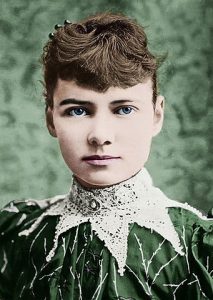
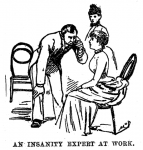 She was born 154 years ago in a part of Pittsburgh, USA, named after her father, Michael Cochran, who had worked his way up from being a labourer to a major landowner, postmaster and respected justice. A passionate advocate for women’s rights from the age of 16, her eloquence landed her a job as a writer for the local newspaper. At the age of 21, she served as a foreign correspondent in Mexico, later publishing her experiences in a book. She was forced to flee Mexico after criticising the Mexican government for imprisoning a local journalist.
She was born 154 years ago in a part of Pittsburgh, USA, named after her father, Michael Cochran, who had worked his way up from being a labourer to a major landowner, postmaster and respected justice. A passionate advocate for women’s rights from the age of 16, her eloquence landed her a job as a writer for the local newspaper. At the age of 21, she served as a foreign correspondent in Mexico, later publishing her experiences in a book. She was forced to flee Mexico after criticising the Mexican government for imprisoning a local journalist. Nellie’s next exploit was to attempt to match the journey from Jules Verne’s novel “Around the World in 80 Days”. The attempt became a race with a rival newspaper fielding another candidate, travelling in the opposite direction. As in the novel, using steamships and railways, Bly started on 14 November, 1889 and travelled through England, France (where she met Jules Verne), Italy, Egypt, Sri Lanka, Penang, Singapore, Hong Kong and Japan (as well as a visit to a leper colony in China). She sent short updates on her progress by telegraph from most places, now connected by submarine cables for the new electric telegraph network. She returned victorious to New York a mere 72 days later, on 25 January, 1890, also beating her rival by 4 1/2 days. Her success inspired a board game, no doubt helping 19th century children with their Geography knowledge!
Nellie’s next exploit was to attempt to match the journey from Jules Verne’s novel “Around the World in 80 Days”. The attempt became a race with a rival newspaper fielding another candidate, travelling in the opposite direction. As in the novel, using steamships and railways, Bly started on 14 November, 1889 and travelled through England, France (where she met Jules Verne), Italy, Egypt, Sri Lanka, Penang, Singapore, Hong Kong and Japan (as well as a visit to a leper colony in China). She sent short updates on her progress by telegraph from most places, now connected by submarine cables for the new electric telegraph network. She returned victorious to New York a mere 72 days later, on 25 January, 1890, also beating her rival by 4 1/2 days. Her success inspired a board game, no doubt helping 19th century children with their Geography knowledge! Gonski is in the news again with the release of the Gonski 2.0 report. This is most likely to impact on schools and teachers in a range of ways from funding to curriculum. Here at OpenSTEM we can help you to be ahead of the game by using our materials, which are already Gonski-ready!
Gonski is in the news again with the release of the Gonski 2.0 report. This is most likely to impact on schools and teachers in a range of ways from funding to curriculum. Here at OpenSTEM we can help you to be ahead of the game by using our materials, which are already Gonski-ready!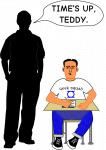 The latest review of “
The latest review of “ Here at OpenSTEM, we have long known that continuous assessment is a better route, especially in the primary years. Continuous assessment allows teachers to track their students’ progress and understanding and identify areas of concern quickly and effectively. Continuous assessment means that students are working more effectively towards their learning outcomes, teachers are aware of each student’s progress towards those outcomes and thus time is more efficiently used by all parties. Teachers can provide the timely feedback advocated in the Gonski recommendation #10. Teachers are also spared the giant load of marking a whole class’ worth of assessment pieces in a few days at the end of term, in time for reporting. A few minutes each week spent checking each student’s work means that by the end of term both teacher and student are aware of how the student is tracking and their grade for that term.
Here at OpenSTEM, we have long known that continuous assessment is a better route, especially in the primary years. Continuous assessment allows teachers to track their students’ progress and understanding and identify areas of concern quickly and effectively. Continuous assessment means that students are working more effectively towards their learning outcomes, teachers are aware of each student’s progress towards those outcomes and thus time is more efficiently used by all parties. Teachers can provide the timely feedback advocated in the Gonski recommendation #10. Teachers are also spared the giant load of marking a whole class’ worth of assessment pieces in a few days at the end of term, in time for reporting. A few minutes each week spent checking each student’s work means that by the end of term both teacher and student are aware of how the student is tracking and their grade for that term. “Strengthen the development of the general capabilities, and raise their status within curriculum delivery, by using learning progressions to support clear and structured approaches to their teaching, assessment, reporting and integration with learning areas”
“Strengthen the development of the general capabilities, and raise their status within curriculum delivery, by using learning progressions to support clear and structured approaches to their teaching, assessment, reporting and integration with learning areas”
 It is the time of year when the thoughts of teachers of students in years 3, 5, 7 and 9 turn (not so) lightly to NAPLAN. I’m sure many of you are aware of the controversial
It is the time of year when the thoughts of teachers of students in years 3, 5, 7 and 9 turn (not so) lightly to NAPLAN. I’m sure many of you are aware of the controversial  Perelman had been asked to review the planned robot-marking of NAPLAN essays in October 2017, and his criticism was so harsh that the plan was scrapped. ACARA seems to be taking Perelman’s concerns seriously. ACARA have stated that they believe that teachers focus on building and expanding the vocabulary of students and students should be able to use this vocabulary in “meaningful, constructive ways”. It seems certain that ACARA will re-evaluate the marking of NAPLAN essays in the face of these criticisms.
Perelman had been asked to review the planned robot-marking of NAPLAN essays in October 2017, and his criticism was so harsh that the plan was scrapped. ACARA seems to be taking Perelman’s concerns seriously. ACARA have stated that they believe that teachers focus on building and expanding the vocabulary of students and students should be able to use this vocabulary in “meaningful, constructive ways”. It seems certain that ACARA will re-evaluate the marking of NAPLAN essays in the face of these criticisms.
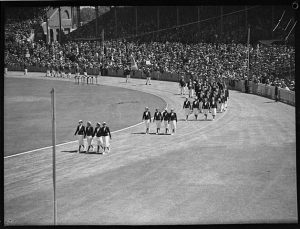
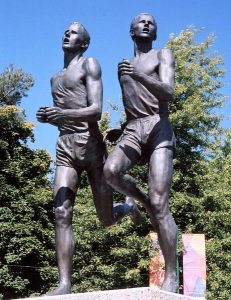
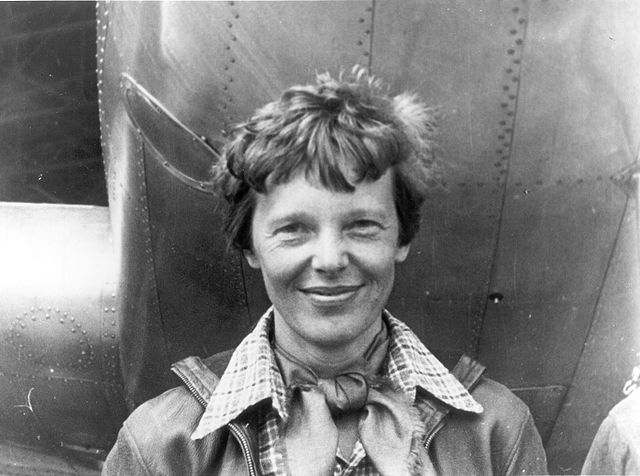
 Let’s quickly recap the mystery surrounding Amelia Earhart:
Let’s quickly recap the mystery surrounding Amelia Earhart:
History and Geography are no longer boring and dry, and the material provides a wide variety of topics.
Laura Davidson, Teacher